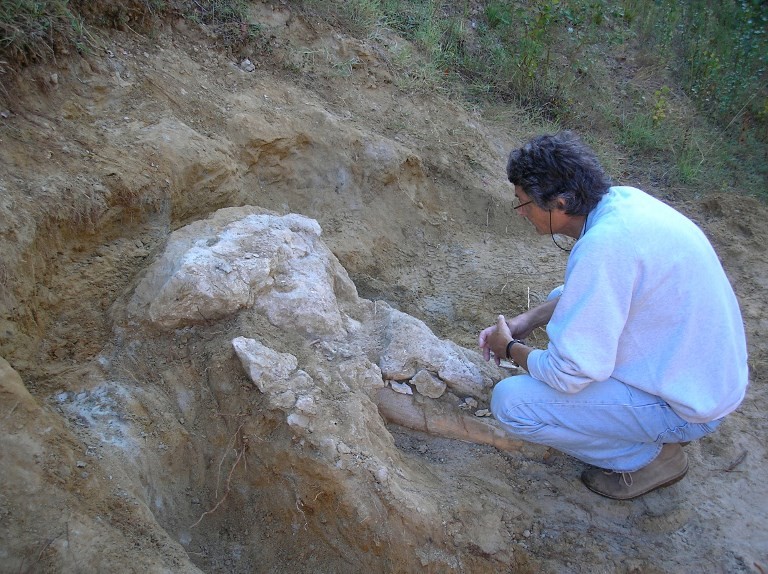Popular Reads
Top Results
Can't find what you're looking for?
View all search resultsPopular Reads
Top Results
Can't find what you're looking for?
View all search resultsRare skull of elephant ancestor unveiled in France
A French farmer kept quiet for years after stumbling across the skull of an extinct ancestor of the elephant near the Pyrenees mountains.
Change text size
Gift Premium Articles
to Anyone
 This handout picture released on July 12, 2018 by the National History Museum of Toulouse (Musee d'Histoire Naturelle de Toulouse) and taken in September 2017 shows paleontologist Pascal Tassy sitting next to the skull of a mastodon from the Pyrenees, an extinct 'relative of elephant' on the site where the skull was found by a farmer. (HO/Musee d'Histoire Naturelle de Toulouse/AFP/-)
This handout picture released on July 12, 2018 by the National History Museum of Toulouse (Musee d'Histoire Naturelle de Toulouse) and taken in September 2017 shows paleontologist Pascal Tassy sitting next to the skull of a mastodon from the Pyrenees, an extinct 'relative of elephant' on the site where the skull was found by a farmer. (HO/Musee d'Histoire Naturelle de Toulouse/AFP/-)
A
French farmer kept quiet for years after stumbling across the skull of an extinct ancestor of the elephant near the Pyrenees mountains, the Natural History Museum of Toulouse has told AFP.
The farmer discovered the first-ever skull of a Pyrenean mastodon in 2014 while doing work on his land near the village of L'Isle-en-Dodon, about 70 kilometers southwest of Toulouse.
Worried that the farm would be overrun by hordes of amateur paleontologists he kept the find a secret for two years before eventually contacting the museum.
"It was only when we went there, in 2017, that we realized the significance of the discovery," the museum's management said.
The gomphoterium pyrenaicum was "a kind of elephant with four tusks measuring around 80 centimeters, two on the upper jaw and two on the lower jaw," museum director Francis Duranthon told AFP on Wednesday.
Read also: Giant dinosaur bones get archaeologists rethinking Triassic period
Before that the only evidence that the giant herbivores had roamed the area millions of years ago were four teeth found in the same area in 1857.
"Now we have a full skull which will allow us to get a clearer picture of the anatomy of this species," Duranthon said.
"We're putting a face on a species which had become almost mythical," the museum's curator Pierre Dalous added.
The skull has been unearthed and brought to a laboratory partly encased in rock.
"Now we have to chip away, centimeter by centimeter, to reveal the rest of the skull," Dalous said, adding that experts were halfway through the work which is expected to be completed within six to nine months.










